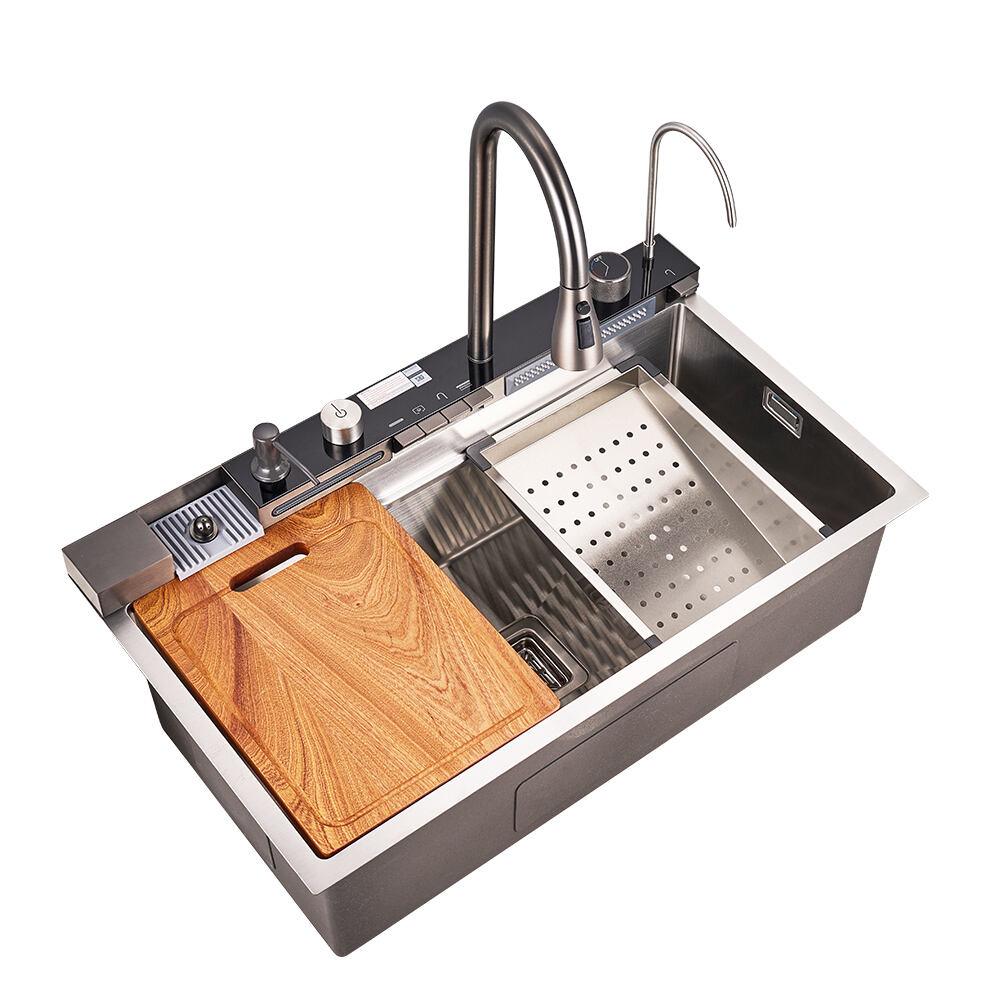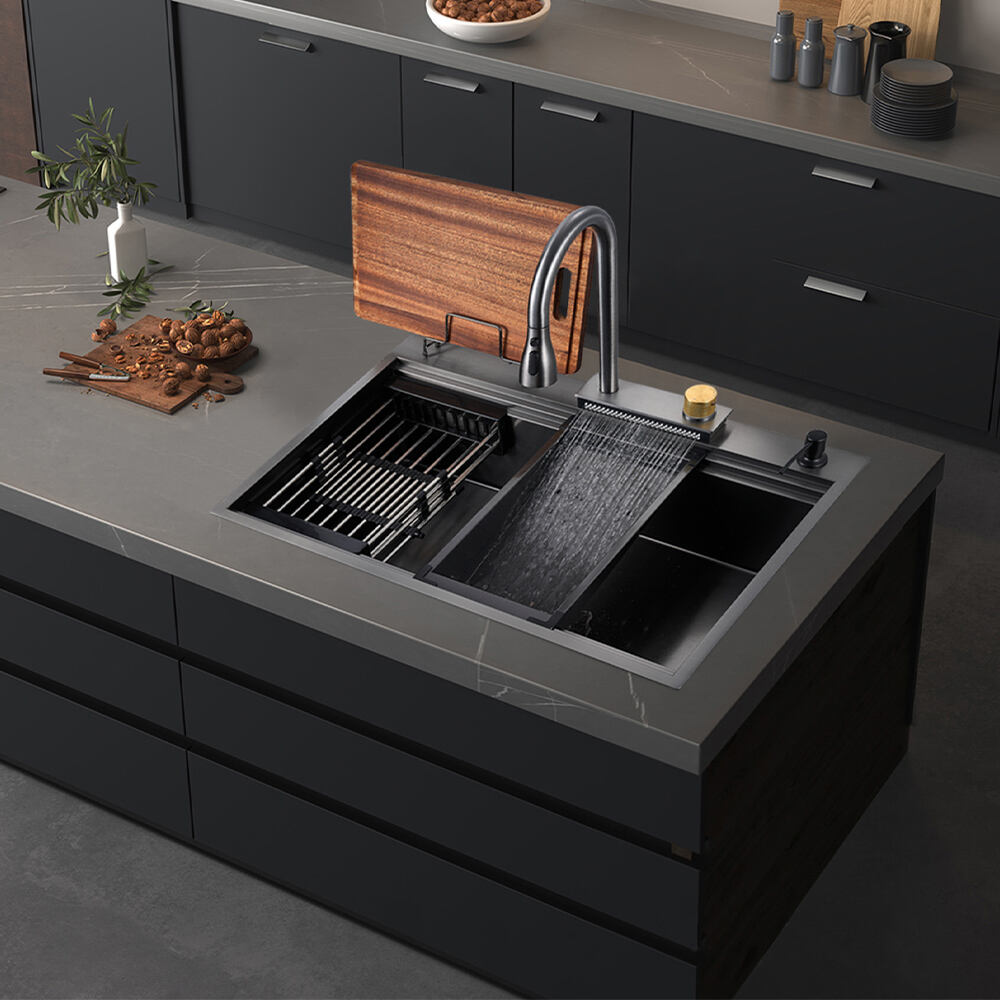Understanding the Appeal of Modern Granite Sinks
A granite sink represents the perfect fusion of durability and aesthetic appeal in contemporary kitchen design. These sophisticated fixtures have become increasingly popular among homeowners who seek both functionality and elegance in their kitchen spaces. Made from a composite material that contains up to 80% granite stone particles bonded with acrylic resins, granite sinks offer superior resistance to scratches, stains, and impacts while maintaining their beautiful appearance for years to come.
The evolution of kitchen design has seen granite sinks emerge as a preferred choice for discerning homeowners. Their non-porous surface, heat resistance up to 280°C, and ability to dampen sound make them particularly attractive for busy kitchens. Whether you're renovating your existing kitchen or designing a new one, selecting the right granite sink can significantly enhance both the functionality and value of your space.
Essential Features of Quality Granite Sinks
Material Composition and Durability
The foundation of any superior granite sink lies in its material composition. High-quality granite sinks typically contain 80-95% natural granite stone particles combined with advanced acrylic resins. This combination creates a remarkably durable surface that resists scratches, chips, and stains. The manufacturing process involves subjecting these materials to intense heat and pressure, resulting in a sink that's practically indestructible under normal kitchen use.
Modern granite sinks also feature UV-stable materials that prevent fading or discoloration, even when exposed to direct sunlight. The density of the material provides excellent thermal stability, allowing the sink to withstand extreme temperature changes without cracking or warping.
Design Elements and Aesthetics
When it comes to visual appeal, granite sinks offer an impressive range of design possibilities. The natural stone composition creates a sophisticated matte finish that complements both traditional and contemporary kitchen styles. Available in various colors from classic black and grey to warmer brown tones, these sinks can either contrast or harmonize with your countertop material.
The textured surface of granite sinks provides a unique tactile experience while effectively hiding water spots and minor scratches. Many manufacturers also offer different bowl configurations, from single deep basins to double-bowl designs, allowing you to choose a layout that best suits your cooking and cleaning habits.

Selecting the Perfect Size and Configuration
Measuring and Space Planning
Before selecting your granite sink, careful measurement of your available space is crucial. Consider not only the cabinet width but also the depth and height requirements. Standard cabinet widths for kitchen sinks typically range from 30 to 36 inches, but your specific needs may vary. Remember to account for mounting style - whether undermount, top-mount, or flush-mount - as this will affect the overall dimensions needed.
The depth of a granite sink is particularly important, as these fixtures tend to be deeper than traditional stainless steel options. While this provides excellent functionality for handling large pots and pans, ensure your cabinet space can accommodate the extra depth without interfering with plumbing or disposal units.
Bowl Configuration Options
The choice between single, double, or even triple bowl configurations depends largely on your cooking and cleaning habits. Single bowl granite sinks offer maximum space for large items and are increasingly popular in modern kitchens. Double bowl configurations provide versatility, allowing you to separate tasks like food prep and cleanup.
Consider the bowl depth and proportion when selecting a configuration. Some users prefer equal-sized bowls, while others opt for a larger main bowl with a smaller secondary basin. The key is matching the configuration to your specific needs and kitchen workflow.
Installation and Mounting Considerations
Mounting Styles and Requirements
The mounting style of your granite sink significantly impacts both its appearance and functionality. Undermount installation creates a seamless look with your countertop and makes cleanup easier, as debris can be swept directly into the sink. Top-mount or drop-in installations may be more suitable for existing countertops and typically offer easier installation.
Each mounting style has specific requirements for countertop support and installation. Granite sinks are heavier than their stainless steel counterparts, so proper support structure is essential. Professional installation is often recommended to ensure proper fit and prevent future issues.
Support and Weight Distribution
The substantial weight of granite sinks requires careful consideration of cabinet support structures. Most installations will need additional reinforcement beyond standard cabinet construction. This might include a combination of support frames, brackets, and proper sealing to ensure the sink remains secure and watertight.
Work with your installer to verify that your cabinet base can support the weight of a full granite sink. This includes accounting for the weight of water, dishes, and any disposal unit you plan to install. Proper support will prevent sagging or stress on your countertop material over time.
Maintenance and Care Guidelines
Daily Cleaning Practices
While granite sinks are incredibly durable, proper maintenance ensures their longevity and appearance. Daily cleaning requires nothing more than warm water, mild dish soap, and a soft cloth or sponge. Avoid abrasive cleaners or steel wool that could potentially damage the surface over time.
After each use, rinse the sink thoroughly and wipe it dry to prevent water spots and mineral buildup. This simple routine helps maintain the sink's beautiful matte finish and ensures years of reliable service.
Long-term Protection Strategies
To protect your investment, consider applying a granite sink sealer annually. While most modern granite sinks come pre-sealed, periodic reapplication helps maintain their stain resistance and surface integrity. Avoid leaving harsh chemicals or acidic substances in contact with the sink surface for extended periods.
Regular inspection of the sink mounting and seals helps identify any potential issues before they become problems. Address any signs of wear or damage promptly to prevent water damage to your cabinets or countertops.
Frequently Asked Questions
How long do granite sinks typically last?
With proper care and maintenance, a quality granite sink can last 25 years or more. The extremely durable composition of granite composite materials ensures exceptional longevity, often outlasting other kitchen fixtures.
Can granite sinks be repaired if damaged?
Minor scratches or chips in granite sinks can often be repaired using specialized repair kits available from manufacturers. However, significant damage may require professional repair or replacement. The good news is that such damage is rare due to the material's inherent durability.
Are granite sinks worth the investment compared to other materials?
While granite sinks typically cost more than traditional stainless steel options, their durability, aesthetic appeal, and longevity make them a worthwhile investment for many homeowners. They can significantly enhance kitchen functionality and property value while requiring minimal maintenance over their lifetime.



